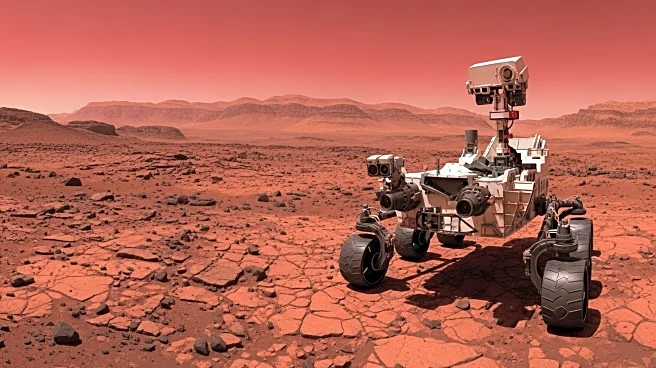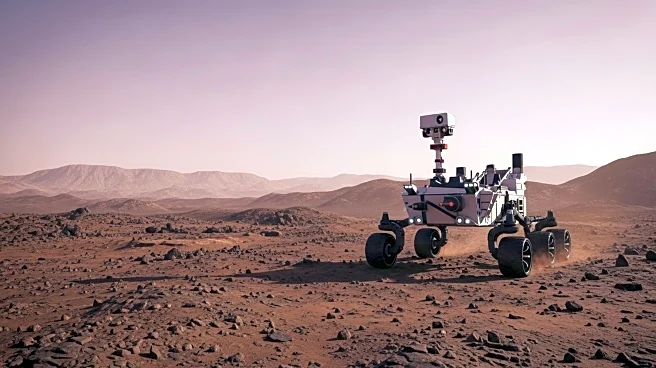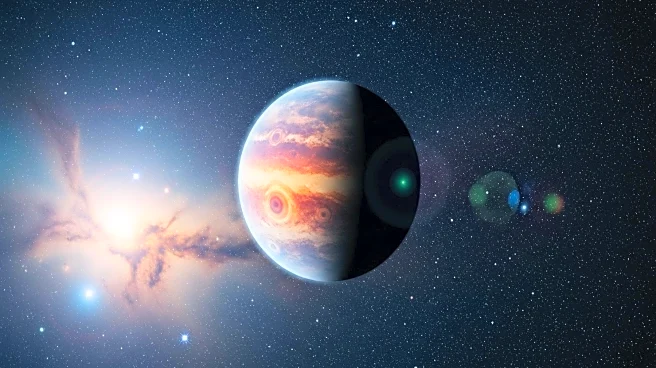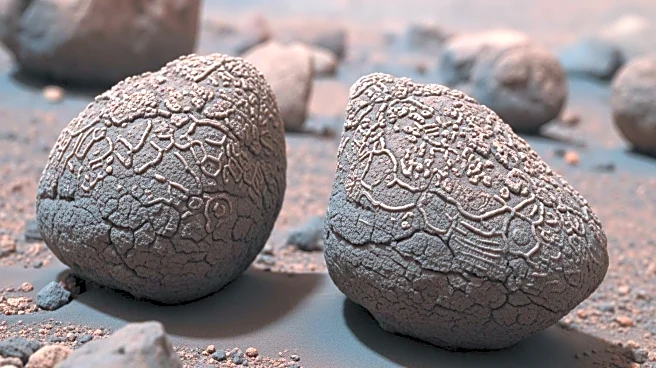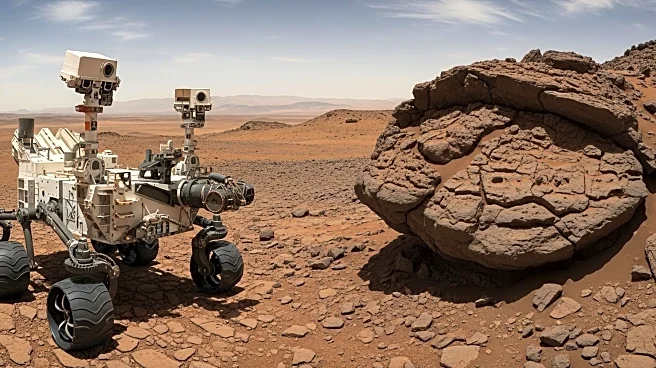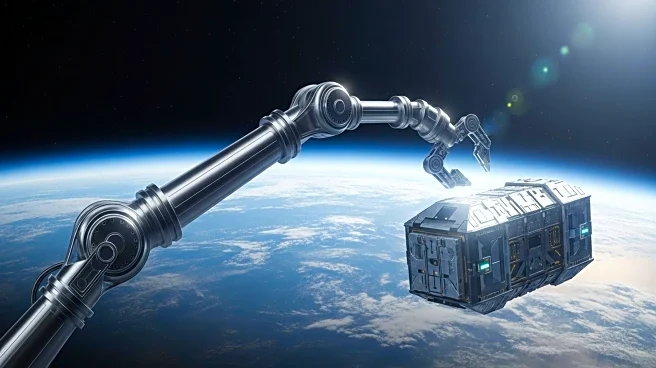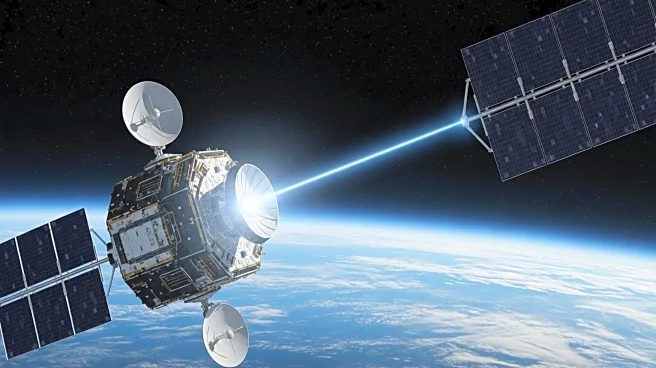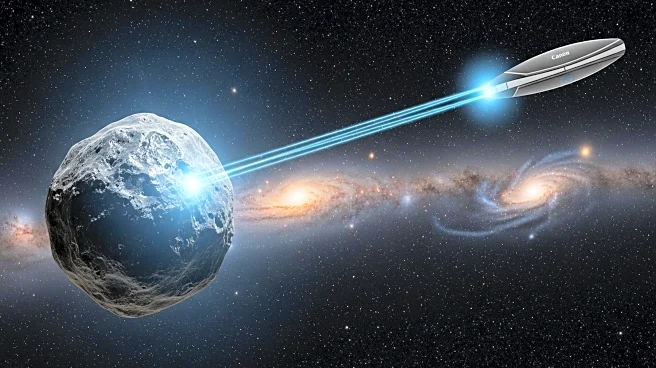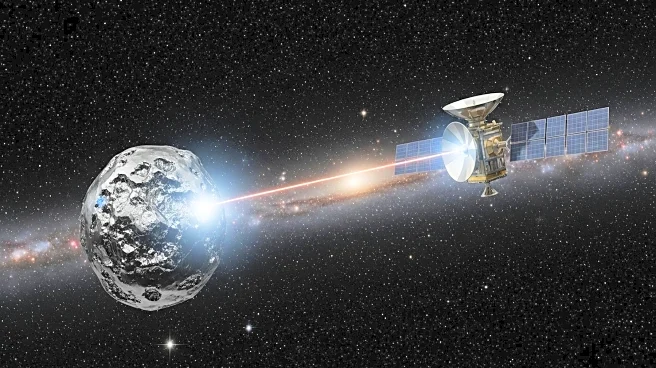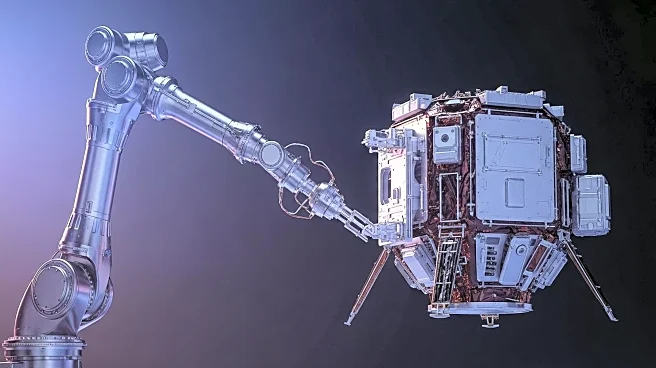What's Happening?
NASA's Curiosity rover has captured a detailed panorama of Mars' Gale Crater, providing one of the clearest views of the Martian landscape to date. The panorama consists of 44 images taken by the rover's Mastcam instrument, showcasing the crater floor and the northern rim. These images were processed at NASA's Jet Propulsion Laboratory in Pasadena, California, where colors were adjusted to simulate Earth-like lighting conditions. Curiosity has been exploring Gale Crater since August 2012, following its launch from Florida in late 2011. The rover's mission is to assess whether Mars ever had conditions suitable for microbial life. Equipped with a robotic arm and various instruments, Curiosity can drill into rocks, analyze samples, and capture high-resolution images. Over the years, it has discovered evidence of ancient lakes and streams, as well as rocks containing organic carbon and other chemical elements.
Why It's Important?
The new panorama from Curiosity offers valuable insights into Mars' geological history and potential for past life. Understanding the Martian environment is crucial for future exploration and potential colonization efforts. The rover's findings contribute to the broader scientific goal of determining Mars' habitability, which could inform the search for life beyond Earth. Additionally, Curiosity's continued operation beyond its initial mission timeline demonstrates the durability and success of NASA's engineering, providing ongoing data that enriches our understanding of the Red Planet. The rover's discoveries also support the upcoming sample return mission, a collaboration between NASA and the European Space Agency, which aims to bring Martian samples back to Earth for detailed analysis.
What's Next?
Curiosity is expected to remain operational for at least two more years, thanks to its Radioisotope Thermoelectric Generator, which provides power through nuclear decay. As the rover continues its exploration, it will likely uncover more information about Mars' past environments. Meanwhile, the sample return mission, still in the planning stages, is anticipated to be completed by 2040. This mission will involve collecting samples from Mars and returning them to Earth, offering unprecedented opportunities for scientific study. The ongoing work of Curiosity and Perseverance will lay the groundwork for this ambitious project, potentially leading to breakthroughs in our understanding of Mars and its potential for life.

